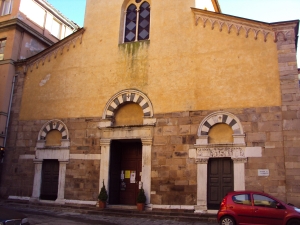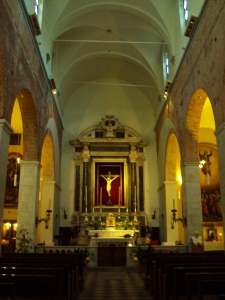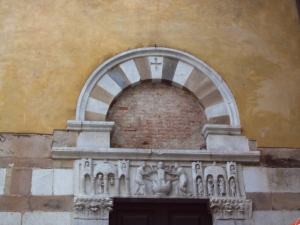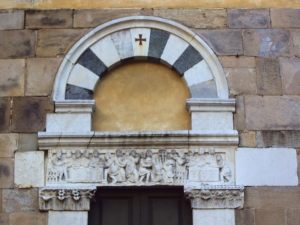
Information
Foundation:
X secolo
District/Location:
Lucca
District:
Piana di Lucca

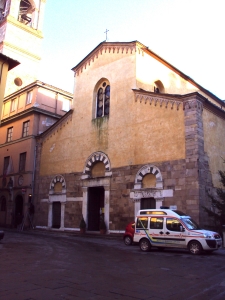
Already existing at the beginning of the 11th century, the church of Saint Salvatore was completely rebuilt during the 12th century, like many others in the Lucca area, and then heavily remodeled in the 19th century. It preserves two important figured architraves referable to the area of Biduino.
Piazza San Salvatore, Lucca
The first document that mentions the church of San Salvatore dates back to 1009, but probably it already existed in the previous century; the name in Mustiolo that accompanies it in the oldest attestations is almost certainly to refer to the term "monasteriolum" and therefore indicates the existence in its vicinity of a monastic complex. During the 12th century - when it was assigned by the Holy See to the chapter of San Frediano - the church was the subject of a complete reconstruction which gave it the three-aisled naves divided by pillars with a rectilinear presbytery still recognizable today despite the consistent intervention in the neo-medieval style of the nineteenth century. However, in addition to the plan, the lower wall structures of the façade and of the south side are to be referred to the medieval church: there are four portals (three on the façade and one on the side) with the usual raised archivolt structure and bicroma ashlars of this area . Two of them - the one on the side and the left side façade - house two sculpted architraves with iconographic themes linked to the cult of Saint Nicholas and both referring to the Biduino workshop: the façade, perhaps assignable to a sculptor's assistant, illustrates the Legend of the golden scifo, with the episodes of the Saracen banquet where he serves Adeodato, a young devotee of St. Nicholas who had been kidnapped by the Emir, and the saint who brings the young man back to his relatives carrying him by the hair; the architrave of the side depicts the miracle of the washing of the saint - when the newborn saint stood up while the maids washed him - and also houses the signature of the craftsman, who left the inscription "Biduinus me fecit hoc op [us ] ”On the bath tub. As has been said, in the interval between the Napoleonic suppressions and the reopening of the cult under the Bourbons with reliance on the Confraternity of the Misericordia (still annexed to the church), the interior of the church was extensively altered: on that occasion it went to all the seventeenth-century stucco decoration was completely lost and many mobile works from other buildings arrived in the church and are today difficult to recontextualize.
This is the case of some 17th century paintings (such as the Assumption of Banduccio Trenta) and a wooden crucifix from the early 14th century from the church of San Pietro alla Magione, while transported to the church only in 1970 is the other wooden crucifix - datable the latter at the end of the same 14th century - coming from the oratory of San Marcello and recently restored. The Ascension of Christ by Zacchia, dated 1561, and the Madonna of the mercy with saints by Alessandro Ardenti, signed and dated 1565, are present in the church.
This is the case of some 17th century paintings (such as the Assumption of Banduccio Trenta) and a wooden crucifix from the early 14th century from the church of San Pietro alla Magione, while transported to the church only in 1970 is the other wooden crucifix - datable the latter at the end of the same 14th century - coming from the oratory of San Marcello and recently restored. The Ascension of Christ by Zacchia, dated 1561, and the Madonna of the mercy with saints by Alessandro Ardenti, signed and dated 1565, are present in the church.
Scopri altre attrazioni vicino a Saint Salvatore
See allYou may also like..
See allFind more
0








